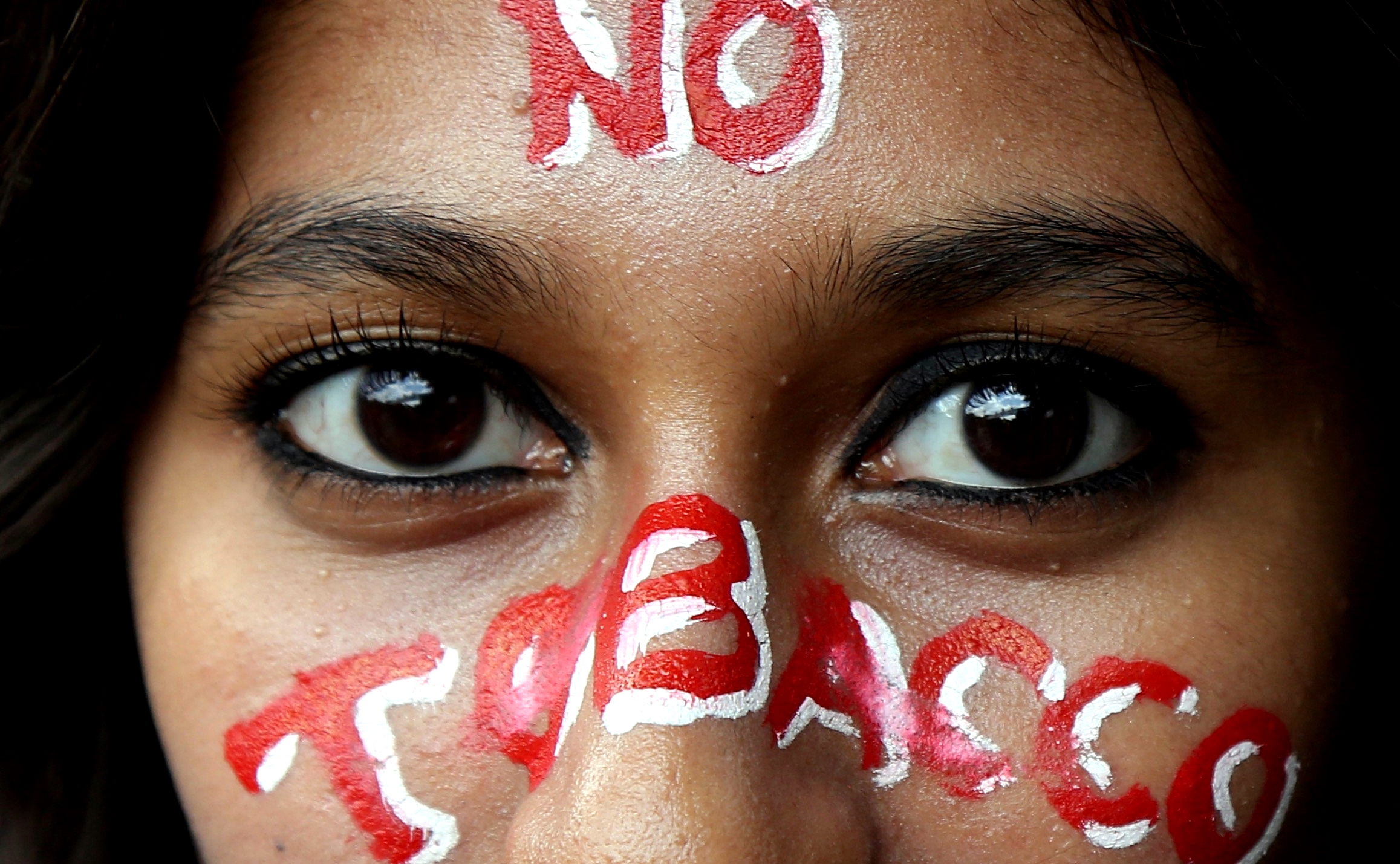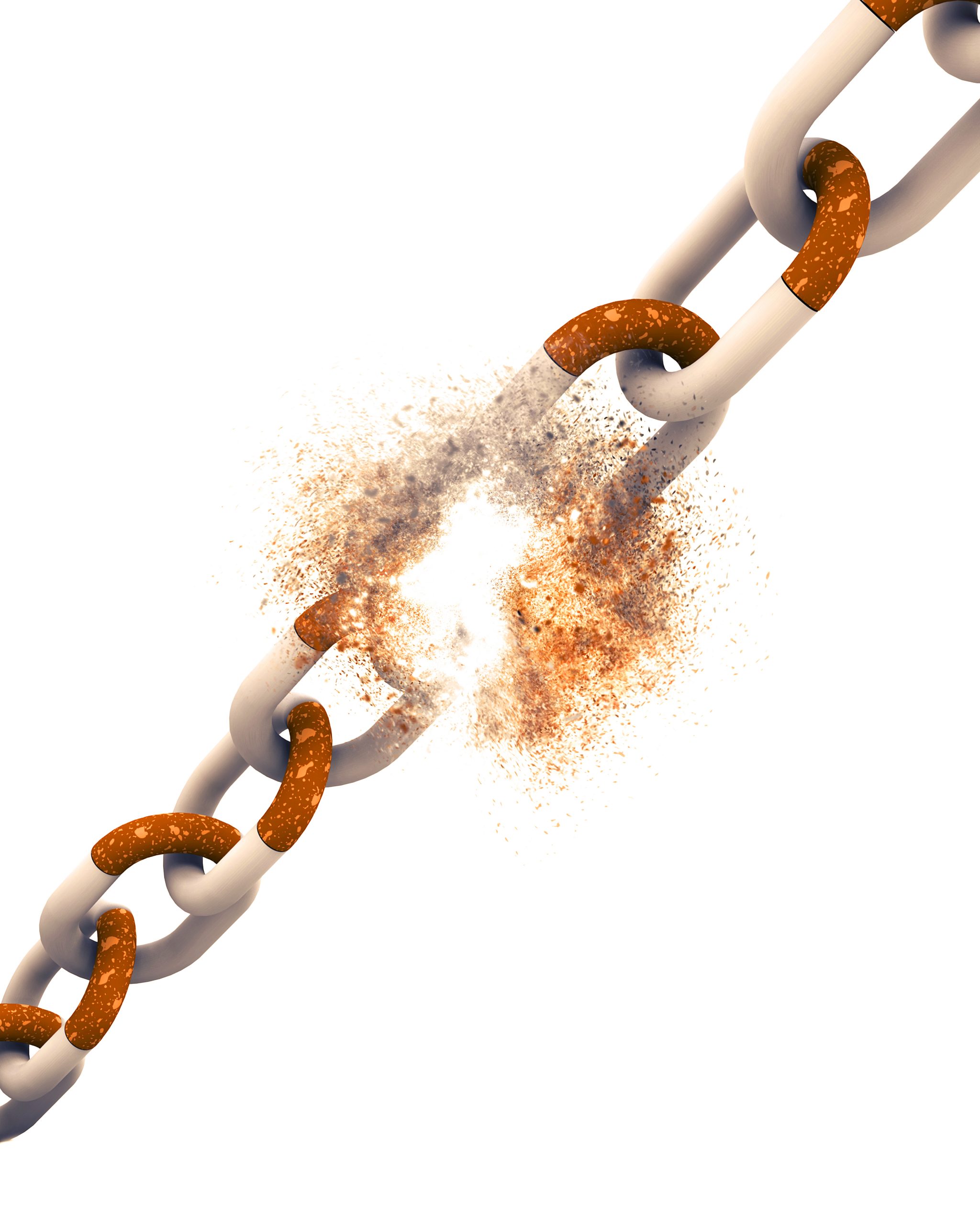Time To Quit Tobacco
 World health organization launched a yearlong campaign for World No Tobacco Day 2021 (WNTD) with the theme of “commit to quit” on 8th December 2020. The Covid-19 pandemic motivated millions of people to quit tobacco consumption. However, only 30% of the population around the globe has quality tobacco cessation services available to them…….
World health organization launched a yearlong campaign for World No Tobacco Day 2021 (WNTD) with the theme of “commit to quit” on 8th December 2020. The Covid-19 pandemic motivated millions of people to quit tobacco consumption. However, only 30% of the population around the globe has quality tobacco cessation services available to them…….
By Dr.Suneela Garg
Welcoming robust tobacco cessation policies, increasing access to cessation services, and raising awareness about the tobacco industry’s tactics are some of the pertinent components of this campaign. This campaign will focus on the smokers who motivated themselves to quit tobacco consumption. Coronavirus disease 2019 (COVID-19) is an infectious disease which is caused by novel Severe Acute Respiratory Syndrome Coronavirus-2 (SARS-CoV-2), this virus mainly affects the lungs. Nicotine which is available in the form of tobacco along with other harmful chemicals is associated with many fatal diseases such as emphysema, chronic obstructive pulmonary diseases, risk of stroke, etc and it is an immunosuppressant that acts through peripheral and central mechanisms. Smokers are more likely to have severe symptoms of Covid-19 or else they are more likely to admit to the hospital with mechanical ventilator support compared to non-smokers.
The prevalence of Covid-19 amongst smokers was compared in the severe and non-severe cases of Covid-19. The results showed that the percentage of current and formers smokers were higher in severe cases as compared to non-severe cases. However, the association between smoking tobacco and the severity of Covid-19 should not be limited to smoking tobacco because smokeless tobacco could also be a potential source of transmitting the virus and worsening health. Smokeless tobacco (SLT) is consumed in more than 140 countries. Consumption of smokeless tobacco leads to increased salivation in the mouth results in spitting at public places unbridling the series of saliva droplets to the commuters. Furthermore, smokeless tobacco is placed in the mouth using fingers or hands.
Thus, leads to the increased chances of Covid-19 transmission from hands to mouth. Angiotensin-Converting Enzyme (ACE2) receptors are the neurotransmitters that facilitate the SARS-CoV-2 entry into the host cells. Studies have shown that ACE2 receptors are present in the oral epithelial cells of the tongue, buccal mucosa, gingiva. Moreover, consumption of SLT increases the expression of ACE2 receptors which reveals that the addiction of SLT can increase the progression of COVID-19 by nicotine-induced ACE2 receptors.

An opportunity to quit tobacco consumption
Many of the tobacco consumers believed that they are at a higher risk of Covid-19 and severe complications associated with it which resulted in increased attempts to quit tobacco consumption by them. In a study conducted recently showed that every third of the smokers were willing to quit tobacco due to a higher risk of contracting Covid-19 as a smoker. A study conducted in China compared the smokers between the pre- Covid-19 era and after the Covid-19 outbreak, results showed that smokers reduced their cigarette consumption after the COVID-19 outbreak because they felt a higher level of satisfaction with their current health after reducing or quitting tobacco. However, a study conducted in Bangladesh to explore the change in tobacco use pattern during the pandemic showed that there was an increase in consumption of smokeless tobacco in the rural participants and the probable reason was stress and anxiety during COVID-19 due to inadequate healthcare facilities, less or no information regarding COVID-19. Another study that discovered the tobacco consumption pattern in five countries (Italy, India, South Africa, the United Kingdom, and the United States) during Covid-19 showed an increased frequency of tobacco consumption during the Covid-19 pandemic which is a cause of concern in turning pandemic into the opportunity of quitting tobacco.
An encouraging aspect of a pandemic was the public health interventions such as lockdown which slightly helped in quitting tobacco consumption. A study-based result showed that almost two-thirds of tobacco users whether smokers or smokeless tobacco consumers, reported a reduction in tobacco use during the lockdown in India. Unavailability and increased prices of tobacco products for an extended period during the lockdown in India led tobacco consumers to take long-term decisions to quit tobacco. The Italian population was surveyed during the lockdown period. Observations showed that there was decreased consumption of tobacco during the time which included many factors such as lack of daily routine in smokers related to consumption of cigarettes, lack of socialization, spending more time with family members and children reduced the consumption of tobacco to respect the family members.
The social role of smoking was explained in a study conducted in Italy and showed that smoking amongst youth ended up due to social isolation because of the lockdown and there were successful quit attempts by the youth.

Changes in the physical environment, social distancing, wearing of mask in the public, restriction in the movement of people are some of the factors responsible which led tobacco consumers to quit tobacco attempts. Furthermore, higher rates of enrolment to tobacco cessation services were found statically, after the pandemic.
As recommended by WHO, the promotion of proven tobacco cessation services is necessary to help tobacco users during this period. Thus, the availability of tobacco cessation services to tobacco consumers is important during the pandemic. Awareness of the risk association of tobacco and Covid-19 amongst tobacco users should be increased. Along with awareness, toll-free tobacco quit line numbers, mobile-based cessation applications or cessation programs should be provided to tobacco consumers, motivating them to quit tobacco. Furthermore, mental health issues rising due to this pandemic and leading people to increase their tobacco consumption should be addressed and studied. Adequate measures have to be initiated such as easy accessibility of mental health counsellors along with tobacco cessation services to the people.
A way ahead and measures
The world has been fighting against the global tobacco epidemic and a report released by WHO (Report on Global Tobacco Epidemic 2019) stated that progress has been made in evidence-based and cost-effective tobacco control strategies over the last decades. Moreover, tobacco cessation services, banning of public smoking in some of the countries, health warnings on tobacco packets, packaging of tobacco packets, higher taxes on tobacco products, etc have already reduced the affordability and availability of tobacco products to the general public. Covid-19 19 pandemic has given a chance and motivation to quit tobacco consumption and for that doctors and other health care workers have to play their role by helping tobacco consumers to quit through various tobacco cessation services such as nicotine replacement therapy, toll-free tobacco quit helpline numbers, etc.
Conclusion
There is a relation between COVID-19 disease severity and tobacco use. The extent of awareness regarding the association of COVID-19 and tobacco should be increased. Tobacco use could be a potential risk factor in contracting COVID-19 as nicotine which is present in tobacco is an immune suppressant and linked to many cardio and pulmonary manifestations. Awareness programs such as “commit to quit” which is initiated by WHO on World No Tobacco Day 2021 should be promoted and more robust ideas have to be provided to prevent the consumption of tobacco and containing the spread of Covid-19.
The author is Professor of Excellence, President, IAPSM, Advisor, ICMR and HOD, Department of Community Medicine, Maulana Azad Medical College, New Delhi

